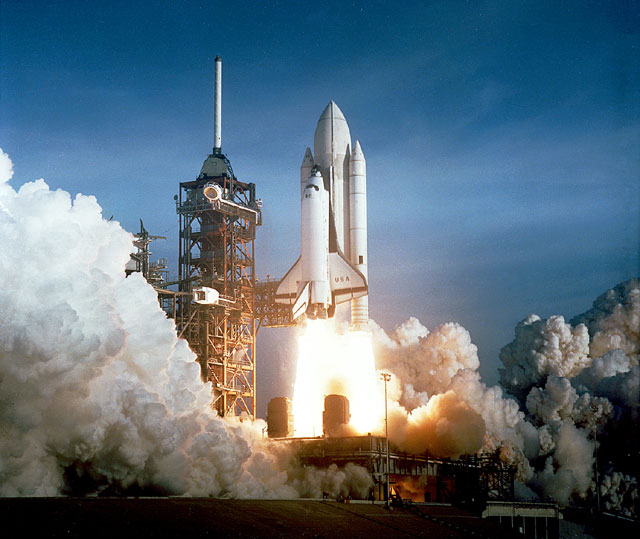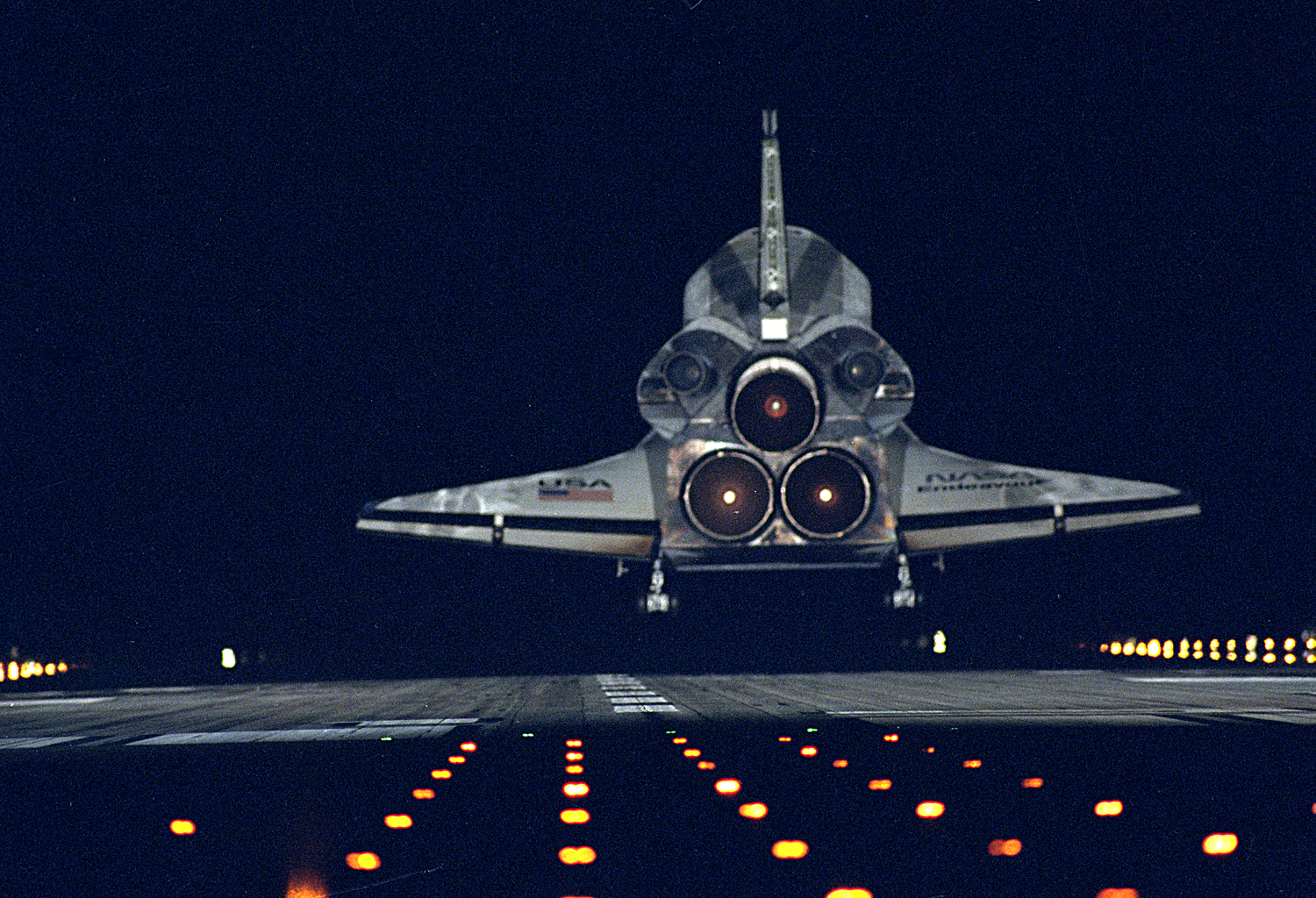NASA's Shuttle Program Cost $209 Billion — Was it Worth It?


When NASA's space shuttle program was announced back in 1972, it was billed as a major advance — a key step in humanity's quest to exploit and explore space.
The shuttle would enable safe, frequent and affordable access to space, the argument went, with flights occurring as often as once per week and costing as little as $20 million each. But much of that original vision didn't come to pass.
Two of the program's 134 flights have ended in tragedy, killing 14 astronauts in all. Recent NASA estimates peg the shuttle program's cost through the end of last year at $209 billion (in 2010 dollars), yielding a per-flight cost of nearly $1.6 billion. And the orbiter fleet never flew more than nine missions in a single year.
The shuttle program is drawing to a close, with its last-ever mission — the STS-135 flight of Atlantis— slated to launch Friday (July 8). So now is as good a time as any to ask: Was it worth it? Or, put another way: Could NASA have found a better use for that $209 billion?
"People endlessly debate this stuff," said Roger Launius, space history curator at the Smithsonian's National Air and Space Museum. "You can make a case on both sides. It's not open-and-shut." [NASA's Space Shuttle Program in Pictures]
Trapped in low-Earth orbit
A chief criticism of the shuttle program is that it prevented more ambitious manned exploration missions.
Breaking space news, the latest updates on rocket launches, skywatching events and more!
There is merit to that argument, experts say. After all, NASA's Apollo programput boots on the moon in 1969, just 12 years after the space age began. But it's been four decades since the last manned lunar landing, and in that time, NASA has made little discernible progress toward the next logical giant leap: getting people to Mars.
Instead, since 1981, the shuttle has kept zipping around the planet over and over again, just a few hundred miles above Earth's surface. [Infographic: Evolution of the Space Plane]
"It kept us limited to low-Earth orbit," said space policy expert John Logsdon, professor emeritus at George Washington Universtity and author of "John F. Kennedy and the Race to the Moon" (Palgrave Macmillan, 2010).
Indeed, some NASA officials have voiced dissatisfaction with the agency's post-Apollo focus on the shuttle and the International Space Station, which shuttle missions have helped build since 1998.
"It is now commonly accepted that was not the right path," then-NASA chief Michael Griffin told USA Today in 2005. "We are now trying to change the path while doing as little damage as we can." [Gallery: Visions of the Future of Human Spaceflight]
The new path Griffin referred to was laid out by President George W. Bush's moon-oriented Constellation program, which President Barack Obama cancelled last year.
Not enough money for Mars?
It's not as if NASA dreamed up the shuttle as part of a plan to restrict astronauts to low-Earth orbit for 30 years. Rather, the vehicle was viewed as a piece of infrastructure to enable more ambitious exploration down the road, Launius said.
Back in 1969, the space agency presented President Richard Nixon with several proposals for its post-Apollo direction. All of them advocated an integrated program aimed at getting astronauts to Marsin a series of steps.
Those steps involved building a shuttle and a space station, then using the station as a jumping-off point for return trips to the moon and, eventually, manned missions to Mars. But Nixon thought all of the proposals were too expensive, so he green-lighted just one aspect of them: the shuttle.
"There was no political will to continue flights to the moon, or to go off to Mars," Logsdon told SPACE.com. [Giant Leaps: Top Milestones of Human Spaceflight]
As a result, there was not enough money to do these things, either. In 1966, NASA's budget was $5.9 billion (4.4 percent of the federal budget). By 1972, Nixon had cut it to $3.4 billion (1.6 percent of the budget).
And in the four decades since, NASA's budget has continued to decrease as a proportion of national spending. The agency got $18.45 billion in fiscal year 2011, less than 0.5 percent of the federal budget.
"It wasn't the space shuttle that was preventing us from exploring further," said space history expert Robert Pearlman, editor of the website collectSPACE.com and a SPACE.com contributor. "It was the lack of political will to give NASA more money."
The shuttle's benefits
While the shuttle program hasn't lived up to the great — and, in hindsight, unrealistic — expectations NASA laid out for it in the early 1970s, it has delivered significant returns over the years, many experts say.
For example, the shuttle has lofted many important pieces of hardware into space, such as the Hubble Space Telescope. And shuttle missions repaired and upgraded Hubble multiple times, enabling scientists to see the universe as never before.
Further, the $100 billion International Space Station, which could provide big research dividends down the road, has taken shape largely as a result of the shuttle's efforts. And hundreds of experiments performed aboard the shuttles themselves have provided scientists with new insights in a range of fields, from biology and medicine to physics and materials science.
In addition to those achievements, the shuttle program has helped humanity establish a foothold beyond our home planet for the first time — a major milestone, some analysts contend.
"We've gone from where we went to space, and we touched space and we came back," NASA space operations chief Bill Gerstenmaier told reporters in a June 28 press conference. "We now are really in the posture where we're learning to live in space and operate in space."
Launius agreed.
"It did create an environment in which spaceflight was an essentially normal activity," he told SPACE.com. "That was a stunning achievement."
For these reasons and more, some argue, the shuttle program should be viewed as a success in many ways.
"On balance, I think it has been a remarkable era for human accomplishments in space," Valerie Neal, curator for contemporary human spaceflight at the Smithsonian, told SPACE.com. "We set out with ambitions to make spaceflight routine, and we pretty much succeeded in doing that."
The bottom line
So was the shuttle program worth the 40 years (10 years of development and 30 years of flight) and $209 billion that NASA and the nation poured into it? That probably depends on your priorities and your point of view.
Some people may always view the shuttle as a costly distraction, a diversion from more ambitious goals that the nation is just now starting to work toward once again. Others will regard it as a ringing success, a triumph of American technological know-how that opened space up and fostered international cooperation like nothing ever had before.
As for history's verdict? It will likely fall somewhere in between, experts say.
"It's not all one way or all the other, in terms of success or failure," Launius said. "The nuances associated with this are going to be signficant in trying to assess the legacy of the shuttle."
Logsdon voiced similar sentiments.
People "will view it with mixed feelings," he said. "It did some remarkable things. But we flew it for too long, and it cost too much."
You can follow SPACE.com senior writer Mike Wall on Twitter: @michaeldwall. Visit SPACE.com for complete coverage of Atlantis' final mission STS-135 or follow us @Spacedotcom and on Facebook.

Michael Wall is a Senior Space Writer with Space.com and joined the team in 2010. He primarily covers exoplanets, spaceflight and military space, but has been known to dabble in the space art beat. His book about the search for alien life, "Out There," was published on Nov. 13, 2018. Before becoming a science writer, Michael worked as a herpetologist and wildlife biologist. He has a Ph.D. in evolutionary biology from the University of Sydney, Australia, a bachelor's degree from the University of Arizona, and a graduate certificate in science writing from the University of California, Santa Cruz. To find out what his latest project is, you can follow Michael on Twitter.



